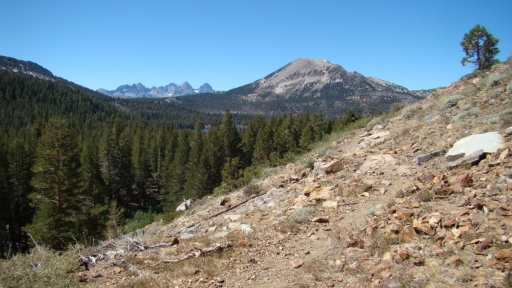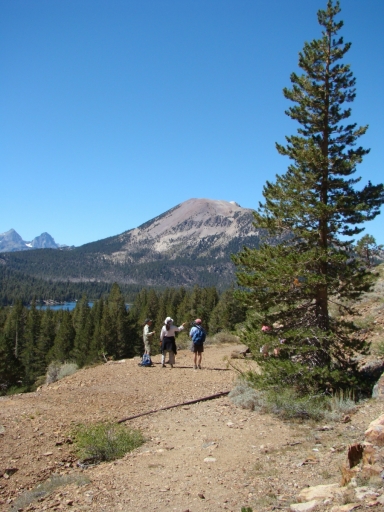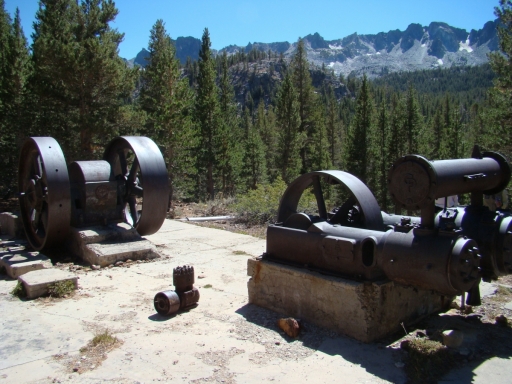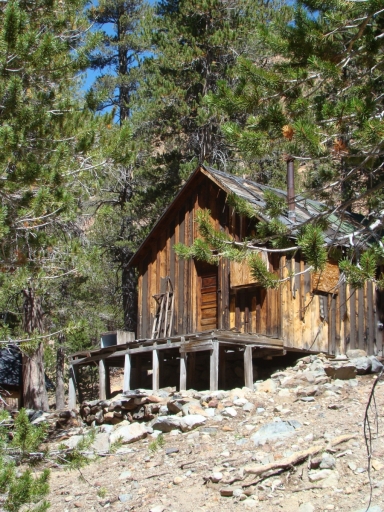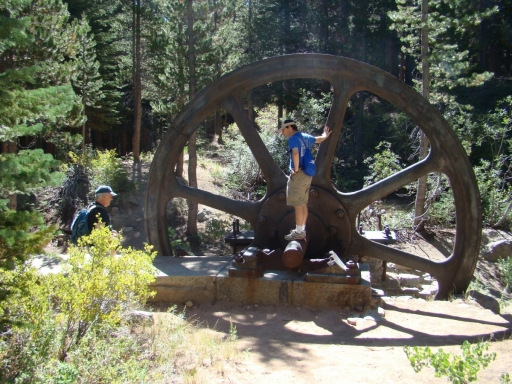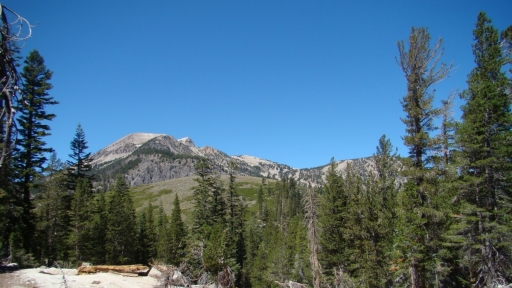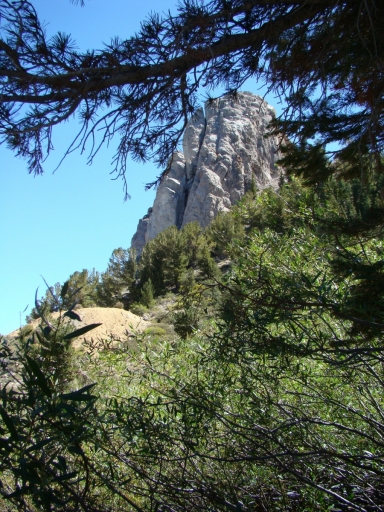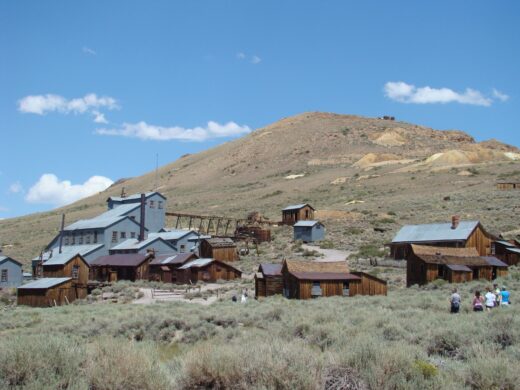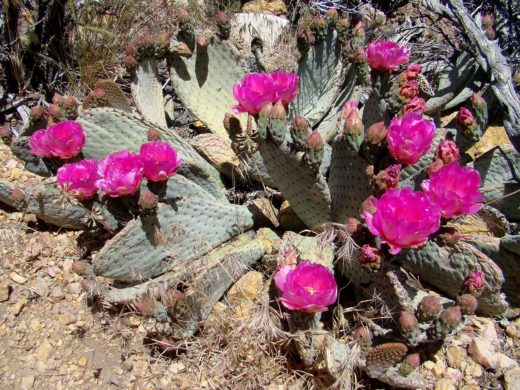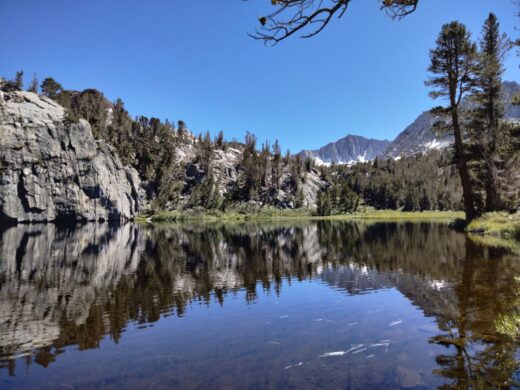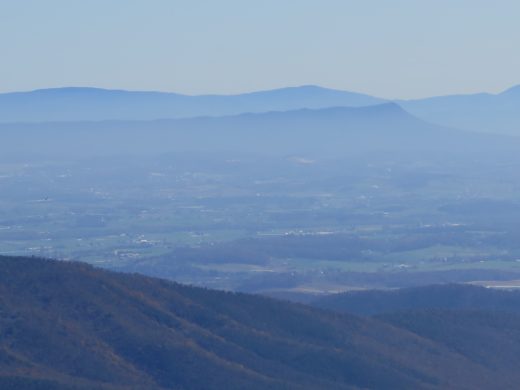Mammoth Gold Mines
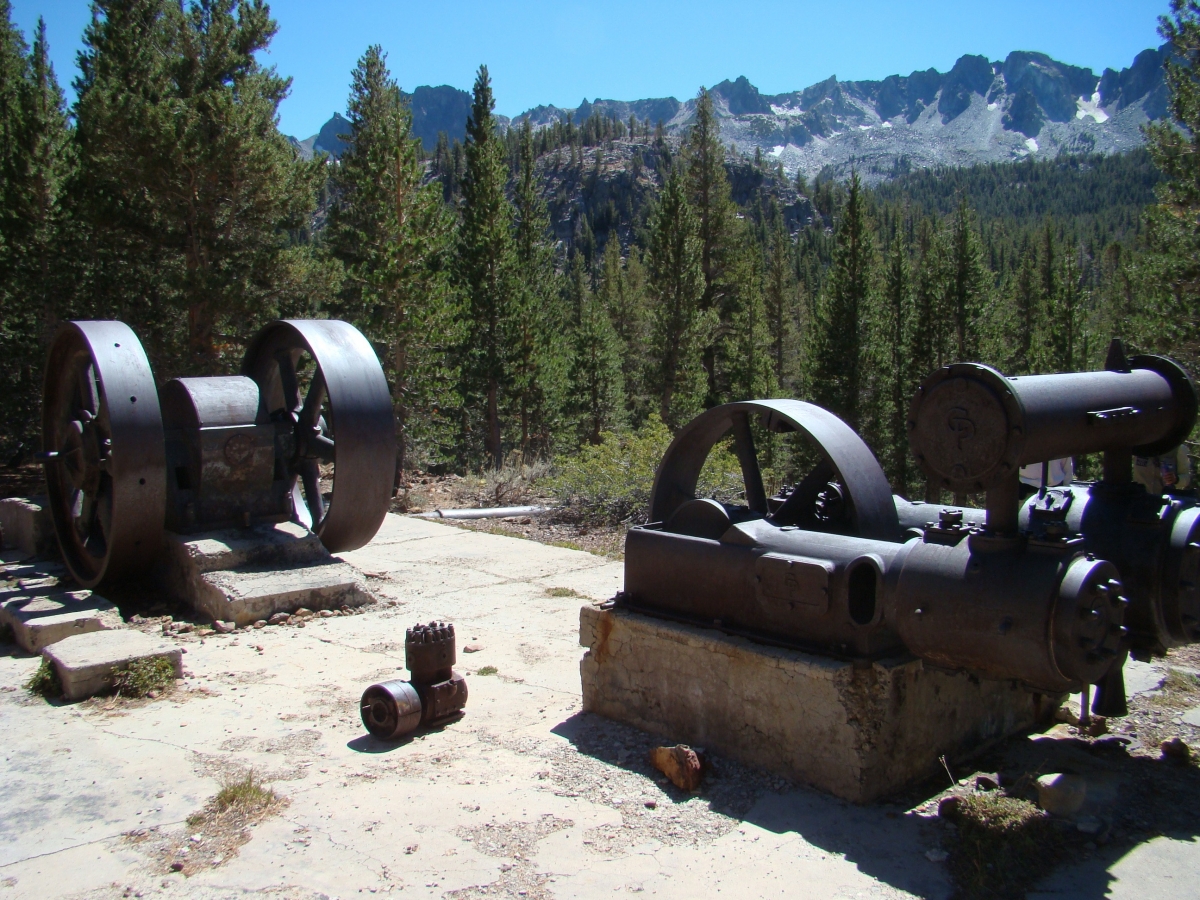
The Mammoth area was home to a number of mining operations over the years. Some of the mines were in the hills with great views of the surrounding mountains, lakes and valleys. These days there is not a lot of mining going on but some mining remains can still be found. On this trip we explored two mining areas.
Mammoth Consolidated Mine
The Mammoth Consolidated Mine was in operation from 1927 to 1933 and was run by the Mahan family. Ore from the mines was transported by carts to the nearby ore processing mill and the gold and silver was extracted. After the mining ended the Mahans changed careers to recreation by purchasing Red Meadows Resorts and showing tourists the sights of the Mammoth area.
These are two views of Mammoth Mountain taken from the trail between some of the former mine entrances. A little of Lake Mary can be seen. The distant peaks are The Minarets, Mount Ritter, and Banner Peak.
Much of the machinery from the mining operation still remains. These machines were used for creating the compressed air which was piped to the mines to run power pneumatic drills. The drills bored holes in the rock for dynamite which fragmented the rock into workable sizes.
Portions of some of the buildings still remain. This is one of the bunkhouses which was heated by wood stoves but did not have electricity or running water. There were between six and fourteen workers in the camp depending on the time of the year. Besides the miners, a cook, assayer, truck driver, blacksmith, and superintendent lived there.
Mill City
Mammoth’s gold mining began in 1877 when a gold and silver deposit was found. During the mining operations the towns of Mammoth City, Mill City and Pine City developed with over 2500 people taking residence there. A twenty stamp mill was in operation. Water came from Twin Lakes and ran through a half-mile flume to power it. The stamp mill crushed the ore to the consistency of sand from which the gold and silver were extracted. Though the gold strike of 1877 was substantial the cost of running the operations ate up profits causing the operations to fold in 1881.
This flywheel, some rock formations, and other metal pieces are about all that remains of the stamp mill. The trough where the water ran down the hill can still be found in places.
Miners have continued to prospect on a small scale to this day. This picture of Mammoth Mountain was taken near the tailings of a more recent mining operation.
Mammoth Rock is a notable landmark of the Mammoth Rocks area. Though most of the area is dominated by volcanic rock, Mammoth Rock is a limestone and marble formation. At its base is an abandoned mine that went some 100 feet into the hill. It is doubtful the owners got anything of value out of it but some interesting crystals can be found embedded in the walls and ceiling.
This is a panorama I created which extends from Mammoth Mountain through the town of Mammoth Lakes. It was taken from the base of Mammoth Rock. The three pictures used to create the panorama are in the Mammoth Gold Mines picture gallery.
